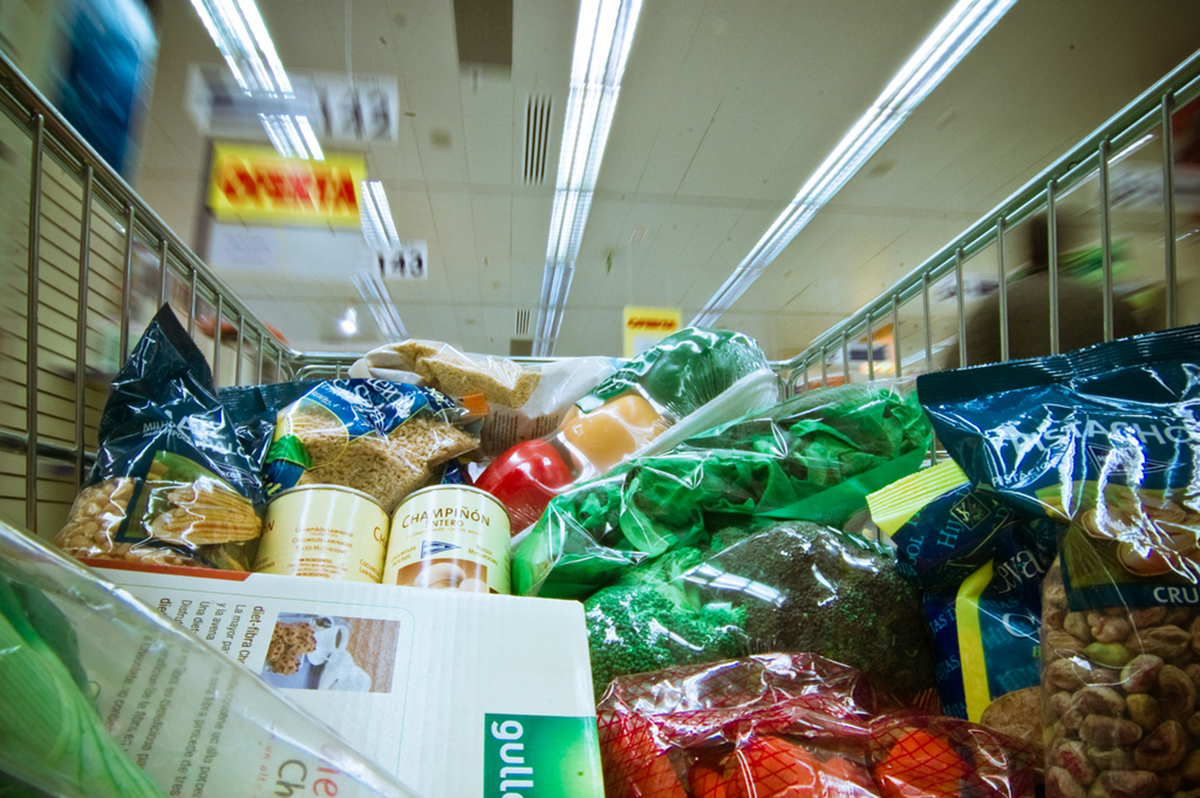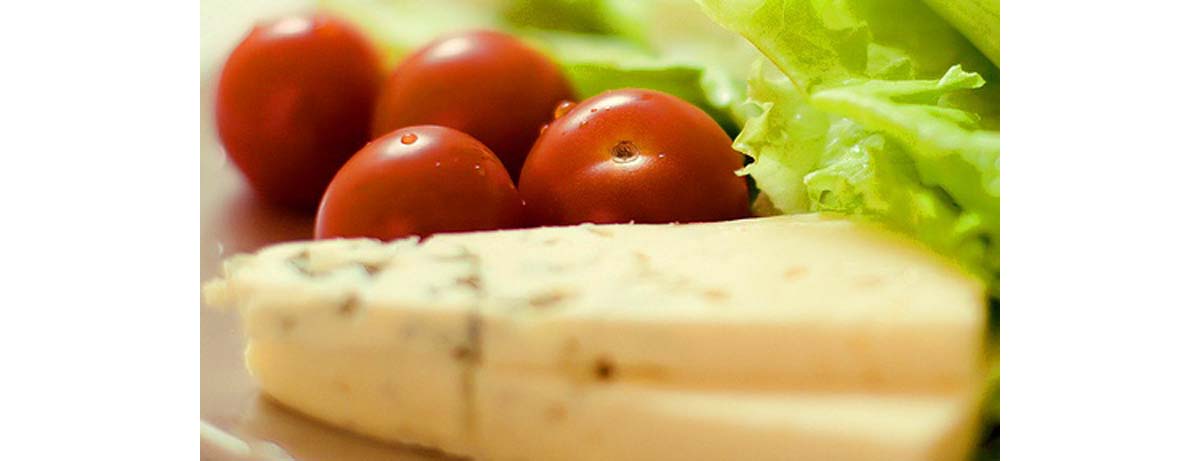Pound for Pound, Broccoli Costs 75% Less than Cheeseburgers
In the USA, the high cost of eating healthy food is often cited as an excuse for being overweight, especially by people who have lower incomes. "Everybody knows" that a bag of chips costs less than a head of broccoli, and that it costs less to eat at McDonald's than it does to cook a meal at home.

If healthy food were just more readily available and more affordable, then it would be more reasonable to expect people to eat right and maintain the healthy weights that would reduce risk of high blood pressure, high cholesterol, and heart disease, many people say. But a very quick look at prices at popular chain restaurants and in grocery stores belies this excuse.
- A family of four can eat breakfast at McDonald's for $16, or about $20 if the adults order extra breakfast sandwiches. That same family of four can each enjoy a bowl of cereal, milk, and fruit, plus coffee and juice for about $7 at home.
- A family of four can have burgers, fries, and soft drinks for lunch at Burger King for about $28. That same family could have chicken, rice, a steamed vegetable and a pudding for desert at home for $9.
- The ads on American television tell us that a little angel carrying a skillet will bop you over the head if you don't go for the buffet at Golden Corral. Dinners of up to five and six thousand calories of every imaginable kind of highly processed defrosted food are available at most buffet eateries for about $50, exclusive of tips and tax. That same family of four could dine on steak or shrimp plus a potato and a salad for about $20 at home. Or if money is really the issue, four people could dine on rice and canned beans with bacon, onions, and peppers for about $8—less if they omit the bacon.
READ Junk Food and Its Impacts on Brain: Junk Food Addiction
Most of the food served in chain restaurants, whether fast food restaurants or sit-down restaurants, is prepared in industrial kitchens and sent out to the restaurants flash-frozen. Chemists and food processing engineers maximize their use of government-subsidized raw ingredients—corn and soy are in nearly everything that Americans eat—and add flavors, aromas, and texturizers that appeal to all the senses.
Regular consumers of restaurant food get so used to the chemicals and additives in their food that they don't really enjoy natural food. They want the chemicals, especially vanilla (which is in nearly all processed foods in some form). They also get addicted to MSG, which is the third named ingredient on many of the food boxes you could find in the dumpsters behind your favorite chain eatery.
People get addicted to eating out—but they don't have to eat out because it's cheaper. It's actually not, assuming you shop at Safeway, Kroger, or HEB and not at Whole Foods and your local Zagat-rated deli. It's even possible to eat well on the $5 per day per person 50 million Americans receive from the Supplemental Nutrition Assistance Program (until recently known as food stamps), without ever buying free-range eggs, grass-fed beef, or imported mineral water.
Can You Really Eat Well on $5 a Day?
If you are accustomed to spending more than $5 a day at Starbucks, the idea that you could buy all your food for just $5 a day and eat nutritious meals takes a little adjustment. Since entrees at fast food restaurants usually cost $6 and up (except at breakfast), and even cheap sit-down restaurant meals run $12 to $14 and up, adjusting a budget of $600 a month for a family of four or $150 a month for a single person in the USA takes some new rules. Here they are.

1. Plan on doing your own cooking
You can buy a black bean enchilada for about $3. You can buy a can of black beans, enough to make 5 or 6 enchiladas, for $1.50, plus a small package of tortillas for another dollar. You can buy enough black beans from the bulk bin at the market to make 5 or 6 black bean enchiladas for about $0.35.
You can grab a sandwich at 7-11 for about $4. You can buy a loaf of bread and enough meat to make 6 sandwiches at 7-11 for about $5. You can use your bread maker to make a loaf of bread and cook a tiny roast to slice into an equivalent amount of sandwich meat for about $4.
If you are on a very tight budget, either because your income is small or because you are saving for a special purpose, you probably need to reserve eating out for very special occasions. But if you are eating out three times a day—why not just try eating out only twice or just once a day? You will save money and you will have total control over the content and quality of what you eat.
2. Plan on cooking ahead
The downfall of many budget diets is boredom. People try to save money by eating peanut butter sandwiches or ramen noodles at every meal—and then get so bored with their food that they go to the all-you-can eat buffet for a splurge meal. Those splurge meals wreck both diets and budgets.
To beat the need to binge, cook a variety of foods once a week and make your own frozen or refrigerated dinners and snacks. Soups, casseroles, and bean dishes actually taste better the second day. That head of broccoli that might be too much for one meal will freeze well for another meal later in the week or next week. Roast beef, chicken, and turkey can do double duty as sandwiches and soup. If your time is at a premium during the week, do most of your cooking on the weekend and do a quick warm-up for your midweek meals.
READ How to Cook Leftovers and Make Them Taste Great
3. Make cooking a priority
National surveys find that almost all Americans watch at least 90 minutes of television every day. Sure, it's easy to plop down in front of the tube after a long day at work, but spending just 30 minutes a day cooking and cleaning up can save thousands of dollars per year—enough to fund a vacation at some resort with meals included, if you like.
Do you need more specific instructions? Keep certain items in your pantry at all times: cooking oil, spices, salt, coffee or tea, cereals you can cook for breakfast, beans (canned or dry), crackers, and any kind of canned soup you enjoy.
- For breakfast, have eggs, oatmeal, bread for toast, jam or marmalade, and coffee on hand. All cooked cereals are inexpensive—even quinoa, which is high in amino acids, protein, and minerals.
- For lunches, make an inexpensive salad with cabbage slaw or broccoli slaw, and fill up on noodles or a rice dish.
- For snacks, buy apples or citrus fruit on sale. They are loaded with nutrients and you can often find them for as little as 25 cents each.
- For dinners, buy meats you cook at home on sale. Make use of your freezer to keep leftovers, and keep noodles, rice, and potatoes on hand to fill out your plate.
- Buy at least one fresh vegetable every week. Try to eat at least one serving nearly every day of the week.
A budget of $35 a week per person or $140 per week for a family of four is far from ideal, but it's not impossible, either. Eat to live, don't live to eat, and use the money you have left over to enjoy your life away from the table.
- Mark Bittman, "Is Junk Food Really Cheaper?" New York Times, 24 September 2011.
- Photo courtesy of Camilo Rueda López by Flickr : http://www.flickr.com/photos/kozumel/2259224024/Photo courtesy of floodkoff on Flickr: http://www.flickr.com/photos/floodkoff/3709957294

